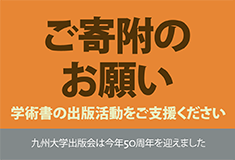目次
Preface
Part 1 Theoretical Analysis
Chapter 1
Intertemporal Effects of Consumption Hiroaki Teramoto
1. Introduction
2. Effects from Now to Future
3. Effects from Past to Now
4. Conclusion
References
Chapter 2
On the Global Dynamic Properties of a Recursive Preference Model
Tadashi Inoue
1. Introduction
2. Basic Framework
3. Concluding Remarks
References
Chapter 3
Redistribution in the Voluntary Provision of a Pure Public Good ( or Bad)
Chikara Yamaguchi
1. Introduction
2. The Model of the Voluntary Provision of a Pure Public Good
3. The Model of the Voluntary Control of a Pure Public Bad
4. Conclusions
References
Chapter 4
Agent-based Simulation of Emissions Trading :
Evaluation of Non-compliance Penalty Systems
Takafumi Okano, Takao Kusakawa, Tatsuyoshi Saijo, and Atsuyuki Suzuki
1. Introduction
2. Rules of Emissions Trading in Kusakawa and Saijo’s Experiment and in our Simulation
3. Learning Algorithm
4. Penalty Systems for Non-compliance
5. Results
6. Concluding Remarks and Policy Implications
References
Chapter 5
On Faithless Descriptions and Forged Bills of Lading
Mineko Morioka and Kazunori Morioka
1. Introduction
2. The Nature of Bills of Lading
3. The Ability to Reject the Acceptance of a Bill of Lading
4. Faithless Descriptions Concerning the Shipping Date
5. Conclusion
References
Part 2 Empirical Analysis
Chapter 6
Rationale for Foreign Exchange Reserves Pooling in Asia
Chris Czerkawski
1. Introduction
2. Some Theoretical Considerations
3. The Rationale for Foreign Exchange Reserve Pooling in Asia
4. Progress in Currency Pooling in Asia
5. Conclusions
References
Chapter 7
Global-Flow-of-Funds Analysis in a Theoretical Model Nan Zhang
What Happened in China’s External Flow of Funds
1. A Framework for the Analysis of Global Flows of Funds
2. The Characteristics of the Oversea Flows of Funds in China
3. Building the Model of Global-Flow-of-Funds
4. A Presumed Result and Econometric Analysis
5. Conclusions
References
Chapter 8
Relative Changes of International Competiteveness Using Input-Output Tables
for Japan and U.S.,1990-2000 Yoshiaki Yanagida
Statistical Analysis Based on the Relative Productivity in the U.S. and Japanese Industry
1. Introduction
2. Comparative Advantage Structures Based on “Aggregate Indices of Labor Productivity between the U.S. and Japan”
3. Data on the Basis of Analysis of “Input-Output Tables for Japan and U.S.”
4. Price Changes of Industry Sections by Relative Changes of Labor Productivity
5. Conclusion
References
Chapter 9
Benefits Estimation of the SO2 Emissions in Japan, South Korea and
each Region of China Tsutomu Tokimasa and Zhaohui Luo
1. Introduction
2. Estimation of Abatement Cost in Regions
3. The Interregional Transfer Coefficient
4. The Analysis of the Benefit Maximization Model of Emissions Trading
5. Benefit-Cost Analysis under Permissions Trading
6. Conclusion
References
Chapter 10
Long-term Recovery Process from Kobe Earthquake :
An Economic Evaluation Toshihisa Toyoda
1. Introduction
2. Conceptual Issues of Economic Losses
3. Direct Economic Losses
4. Indirect Economic Losses
5. Conclusions
References

